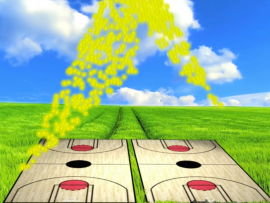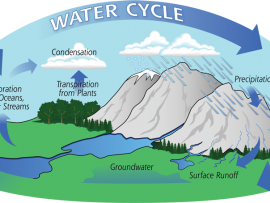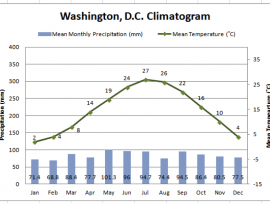Browse Precipitation Resources
Browse Precipitation Resources
Primary Topic:
Subtopics:
Type:
Standards:
Keywords:
Summary:
A simple illustrative comparison of the number of rain gauges active worldwide.
Primary Topic:
Subtopics:
Type:
Standards:
Keywords:
Summary:
In this lesson, students will learn about the water cycle and how energy from the sun and the force of gravity drive this cycle.
Primary Topic:
Subtopics:
Type:
Standards:
Keywords:
Summary:
Contrary to popular belief, raindrops are not tear shaped and are actually shaped like the top of a hamburger bun, round on the top and flat on the bottom. This new video from GPM explains why.
Primary Topic:
Subtopics:
Type:
Standards:
Keywords:
Summary:
Students will compare temperature and precipitation graphs for various U.S. locations to look for patterns in geographical influence on climate, then collect data for a location of their choice and create their own climatogram.
Primary Topic:
Subtopics:
Type:
Keywords:
Summary:
In this hands-on inquiry-based activity, students face an engineering challenge based on real-world applications. They are tasked with developing a tool they can use to measure the amount of rain that falls each day.
Primary Topic:
Subtopics:
Type:
Keywords:
Summary:
This 17 page flyer provides an overview of the GPM Mission. It describes the technologies used to measure precipitation and the missions scientific goals and societal applications.
Primary Topic:
Subtopics:
Type:
Standards:
Keywords:
Summary:
This Speaker ToolKit has been designed to allow presenters (scientists, engineers, etc.) to easily present to an elementary and/or middle school audience about the water cycle.
Primary Topic:
Subtopics:
Type:
Keywords:
Summary:
These original GPM lessons have been developed to teach students about local and global water issues. . They are hands on activities that are done largely outdoors, and which include scientific data collection and analysis and integrate technology.
Primary Topic:
Subtopics:
Type:
Standards:
Keywords:
Summary:
Students will learn about measuring precipitation on the ground and using satellites, and use satellite data to analyze the reason for the monsoon weather pattern in India.
Primary Topic:
Subtopics:
Type:
Standards:
Keywords:
Summary:
Students will investigate the effect of different types of soil on how quickly a landslide occurs and how much mass is moved. They will then relate that information to TRMM/GPM data about rainfall and areas currently at risk of suffering a landslide.











